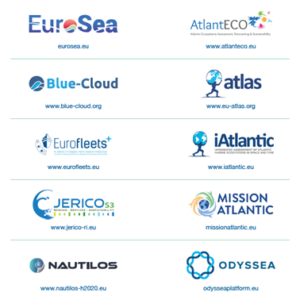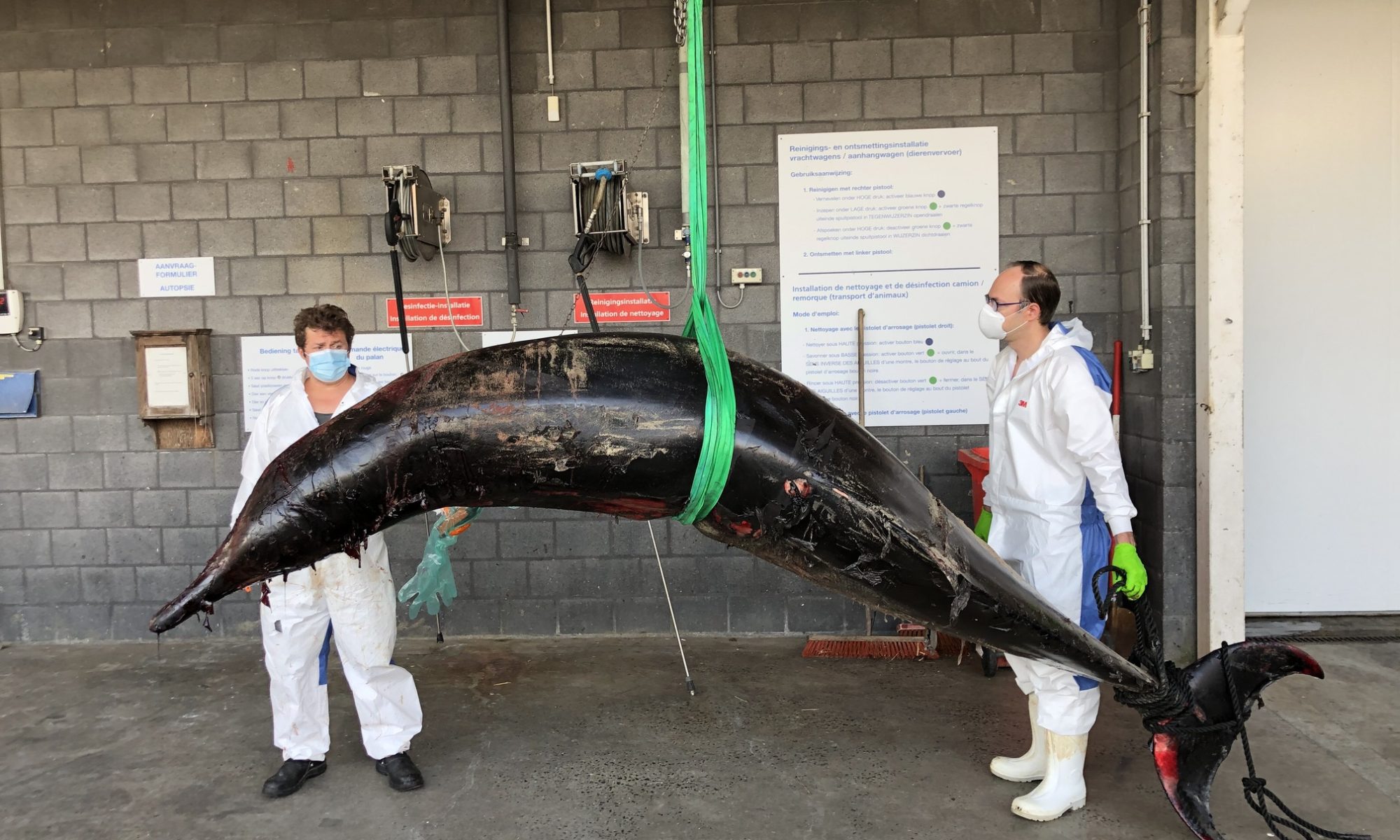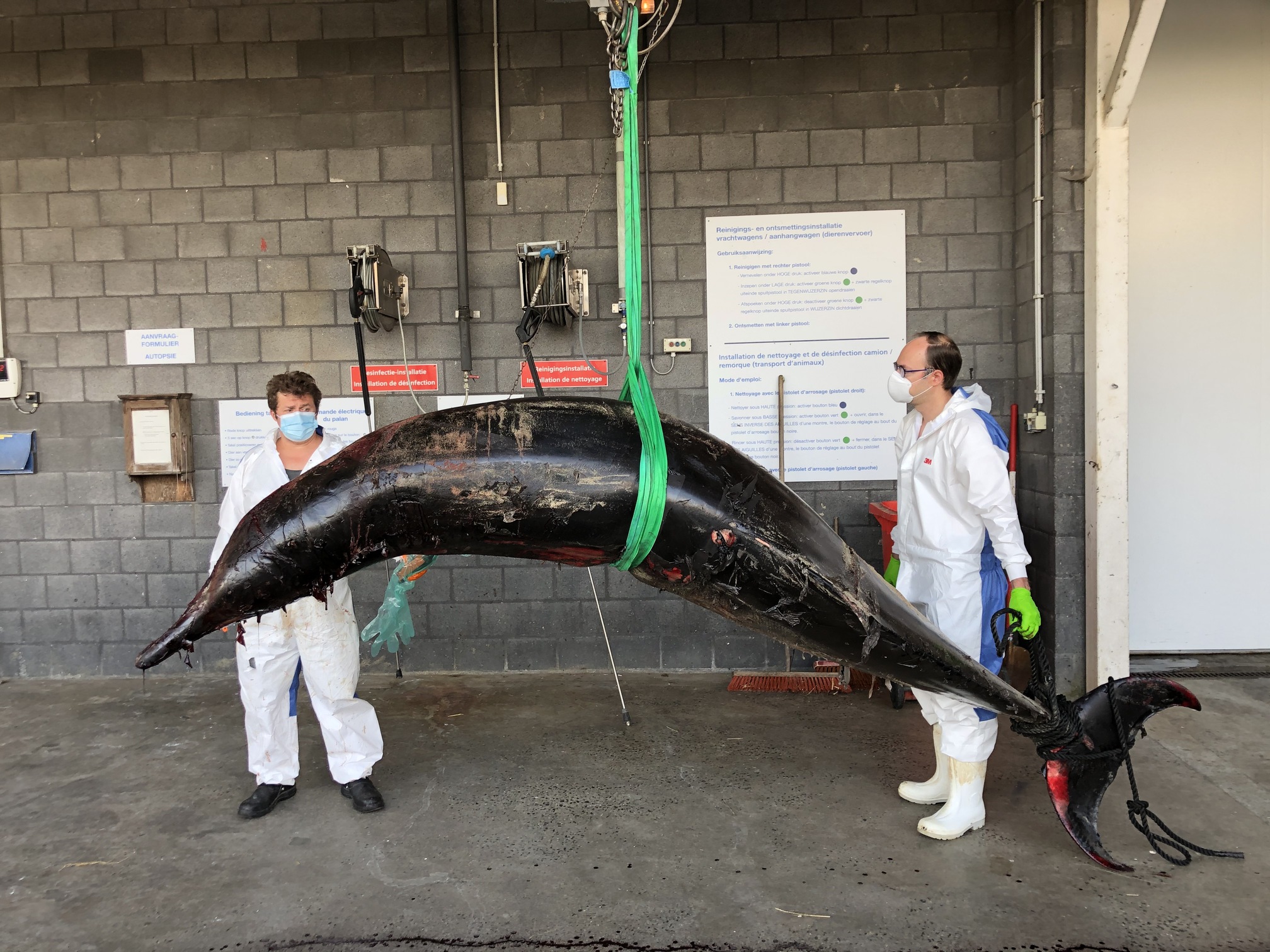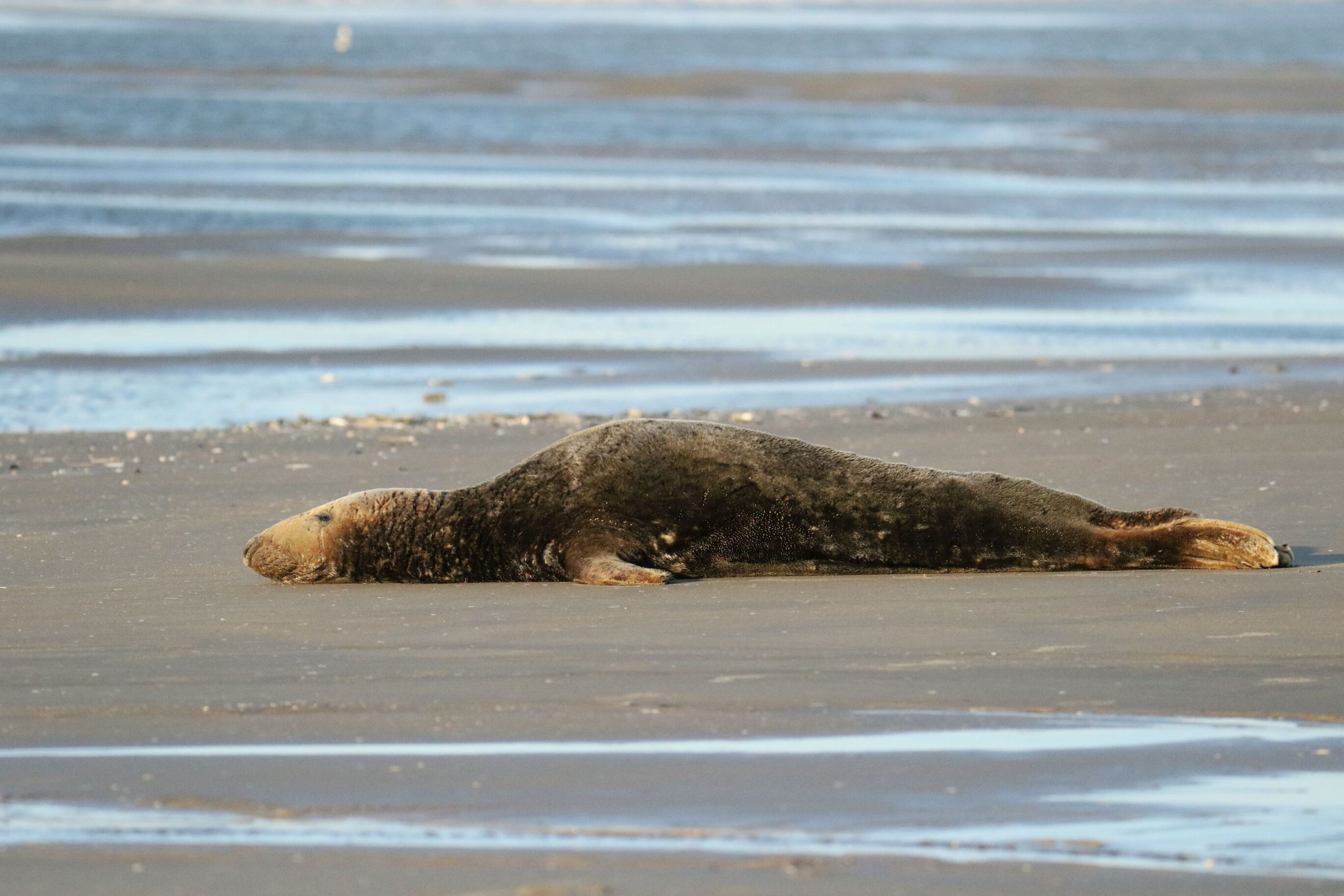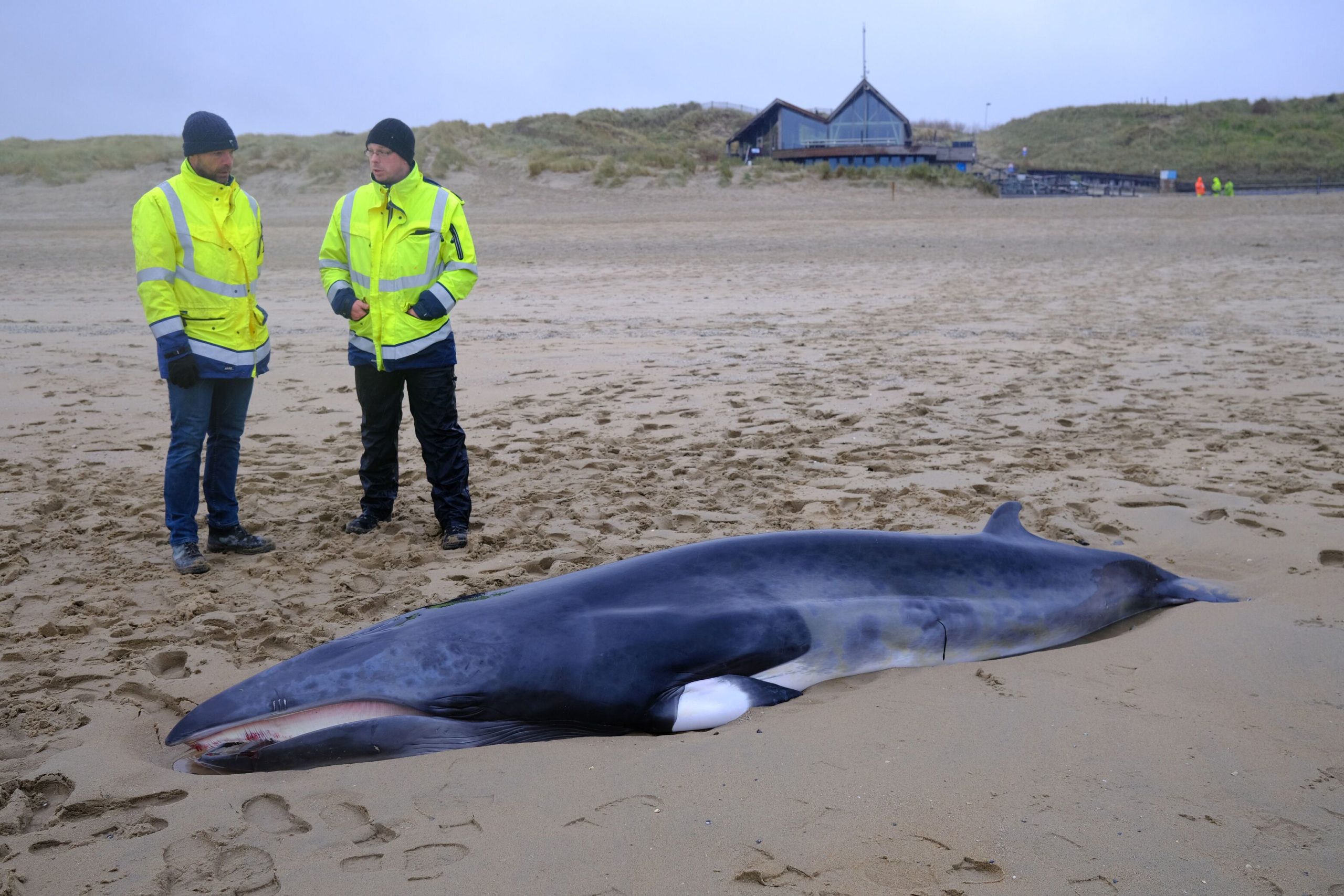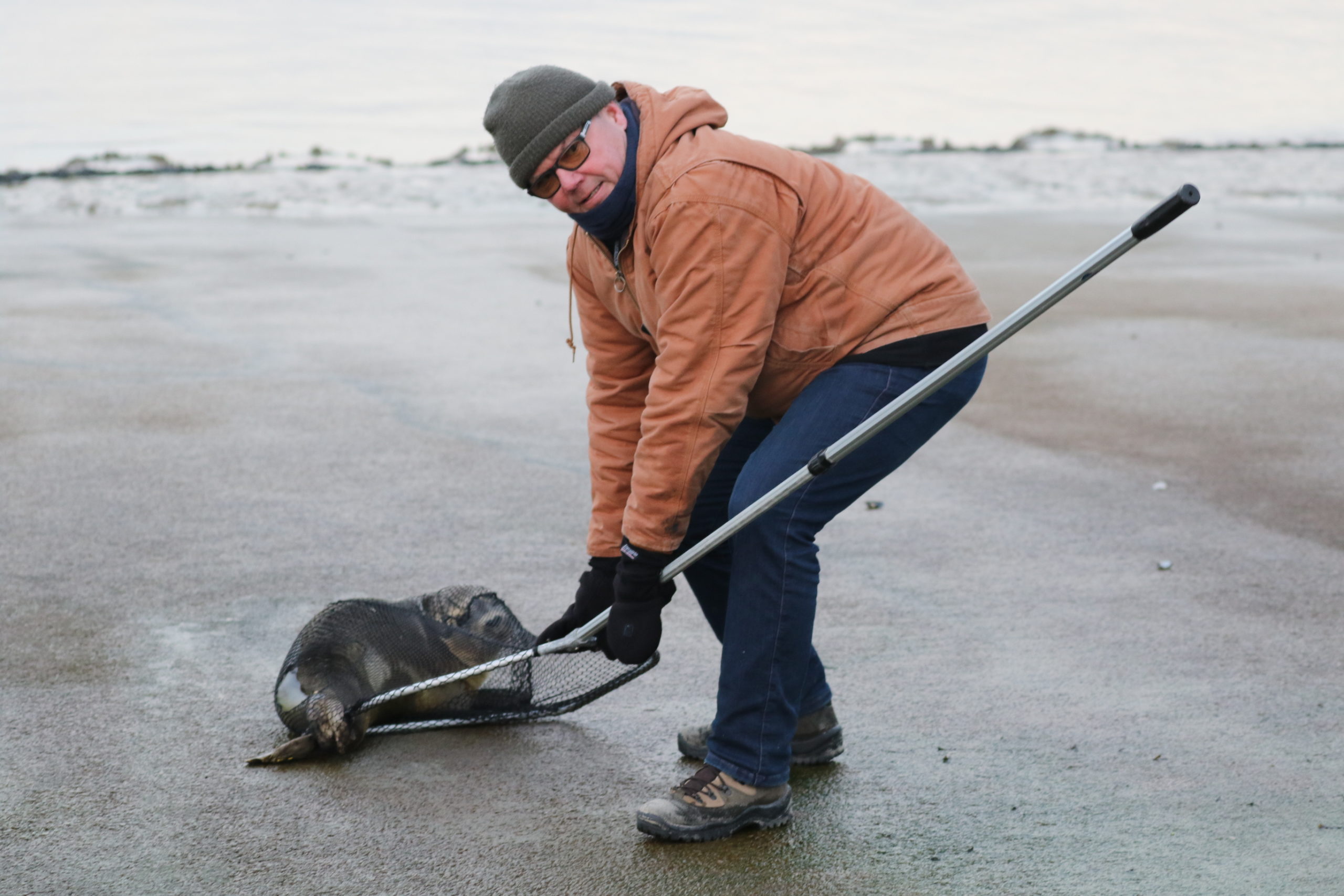Early July 2020, a Dutch shrimp trawler in Belgian territorial waters hauled up nothing less than an elephant tusk in its nets. The 60 kg, 2.37 m long fossil does not belong to a mammoth, as is often the case in our regions, but appears to have come from a Palaeoloxodon antiquus. This is a type of forest elephant that inhabited the area in between ice ages. It is the first time that such an intact specimen has been found here. The tip and part of the base of the tooth are missing. A reconstruction shows that the entire tusk was more than 2.8 m long. Palaeoloxodon antiquus was a giant that was bigger than the elephants that roam the Earth today! The tusk belongs to an adult male individual about 3.5 metres tall. The age of the fossil is estimated between 130,000 and 115,000 years.
Thanks to the joint efforts of Deputy Prime Minister and Minister of Justice and the North Sea, Vincent Van Quickenborne, and State Secretary for Recovery and Strategic Investments in charge of Science Policy, Thomas Dermine, the Royal Belgian Institute of Natural Sciences was able to add the tusk to its collections. From Tuesday 8 February 2022, the general public can admire the tusk at the Museum of Natural Sciences in Brussels.
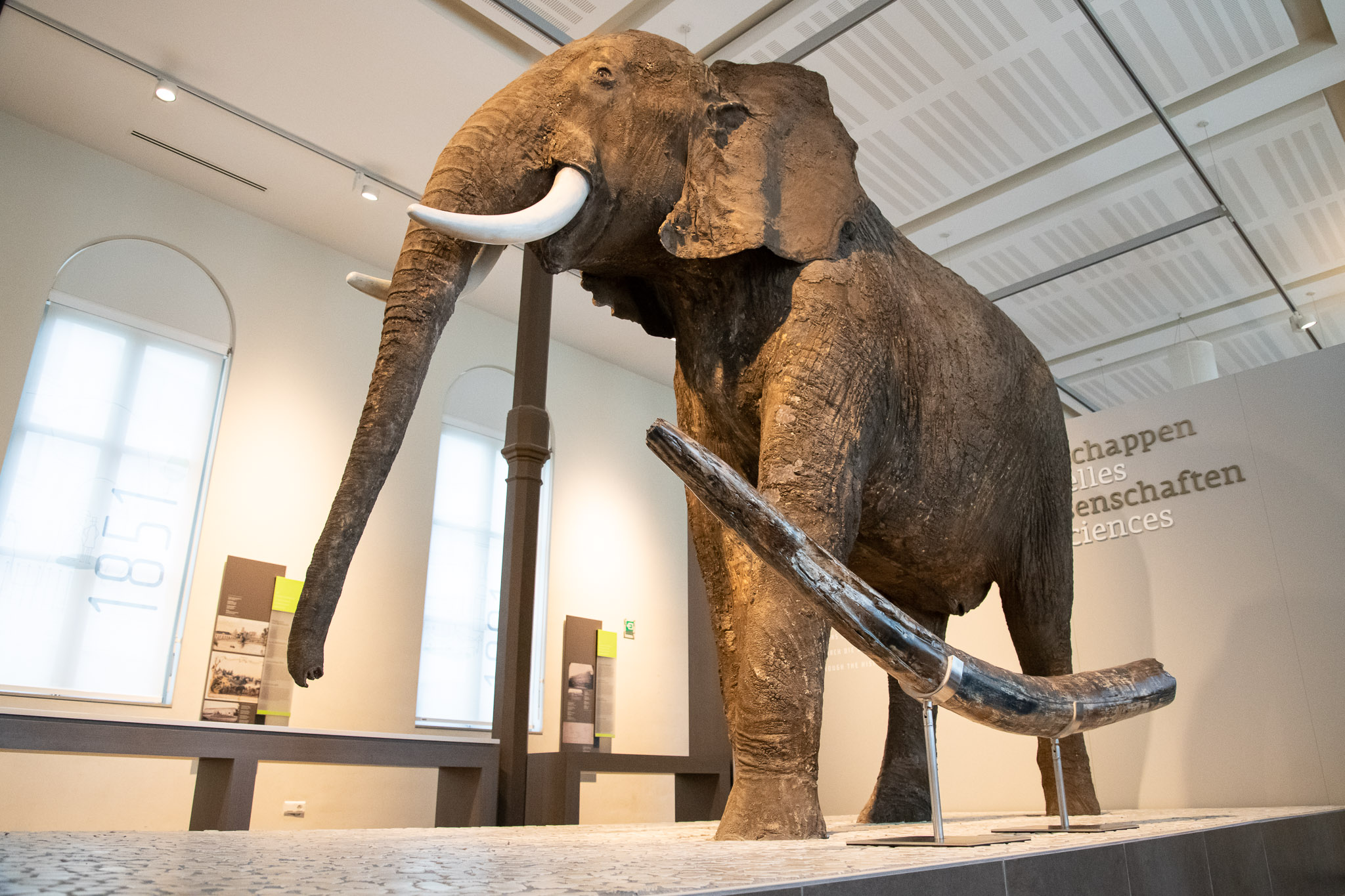
Who was the straight-tusked elephant?
Palaeoloxodon antiquus is a forest elephant that disappeared from our regions before the mammoth. The species was widespread in Europe and thrived mainly during the warmer periods between two ice ages (the interglacials). This discovery is remarkable because there was little evidence of its former presence in Belgium. Palaeoloxodon antiquus was long considered the ancestor of the Asian elephant (Elephas maximus) but is now considered a close relative of the current African forest elephant (Loxodonta cyclotis). Palaeoloxodon antiquus probably originated on the African continent, but it is still little known how widespread this species was in prehistoric times.
Based on the geology of the site, its precise location and the finds of other mammal remains, it is estimated that the tusk dates from the last interglacial period of the Eemian, a period in the Late Pleistocene (approximately 130,000 to 115,000 years ago).

A trench full of fossils
The tusk was fished in “Het Scheur”, a channel in the Belgian part of the North Sea off the coast of Zeebrugge. Dredging is regularly carried out there to enable large ships to enter the Scheldt or Eurogeul. This causes erosion of the banks of the trench. Many mammal fossils have come to the surface in this way. These include the remains of the southernmost Pleistocene walrus colony in the world, the bones of ancient whales that swam here tens of millions of years ago, and the remains of mammoths.
The region where the tus kwas found has changed dramatically in appearance throughout history. It has alternated between sea and land, was covered by an icecap during ice ages, and was a tidal landscape with forests in between the ice ages. This explains why many fossils of very different organisms are found here. However, a tusk of a straight-tusked elephant tooth was never among them.
The fact that this tusk has remained intact is thanks to the fishing method. When fishing for shrimp, no chains are used and the bottom of the net rolls freely on and over the bottom thanks to rubber “wheels”. The shrimp roll in while the net remains free of stones and other unwanted bycatch. Fossils are very rarely caught with this type of net.
A detour to the Museum of Natural Sciences
The Dutch fishermen sold the tusk to North Sea Fossils, a private fossil dealer in Urk, the Netherlands. Afterwards, it was initially studied by researchers associated with the Rotterdam Museum of Natural History.
Thanks to the joint efforts of the Minister for the North Sea, Vincent Van Quickenborne, and the State Secretary in charge of Science Policy, Thomas Dermine, negotiations were started to recover the Belgian fossil. Finally, the Royal Belgian Institute of Natural Sciences was able to include the tusk in its collections, where it will remain available for research and is also made accessible to the public. From Tuesday 8 February 2022, the general public will be able to admire the tusk at the Museum of Natural Sciences in Brussels. The signing of the declaration of donation took place on 7 February 2022, on the occasion of the inauguration of the fossil tusk.
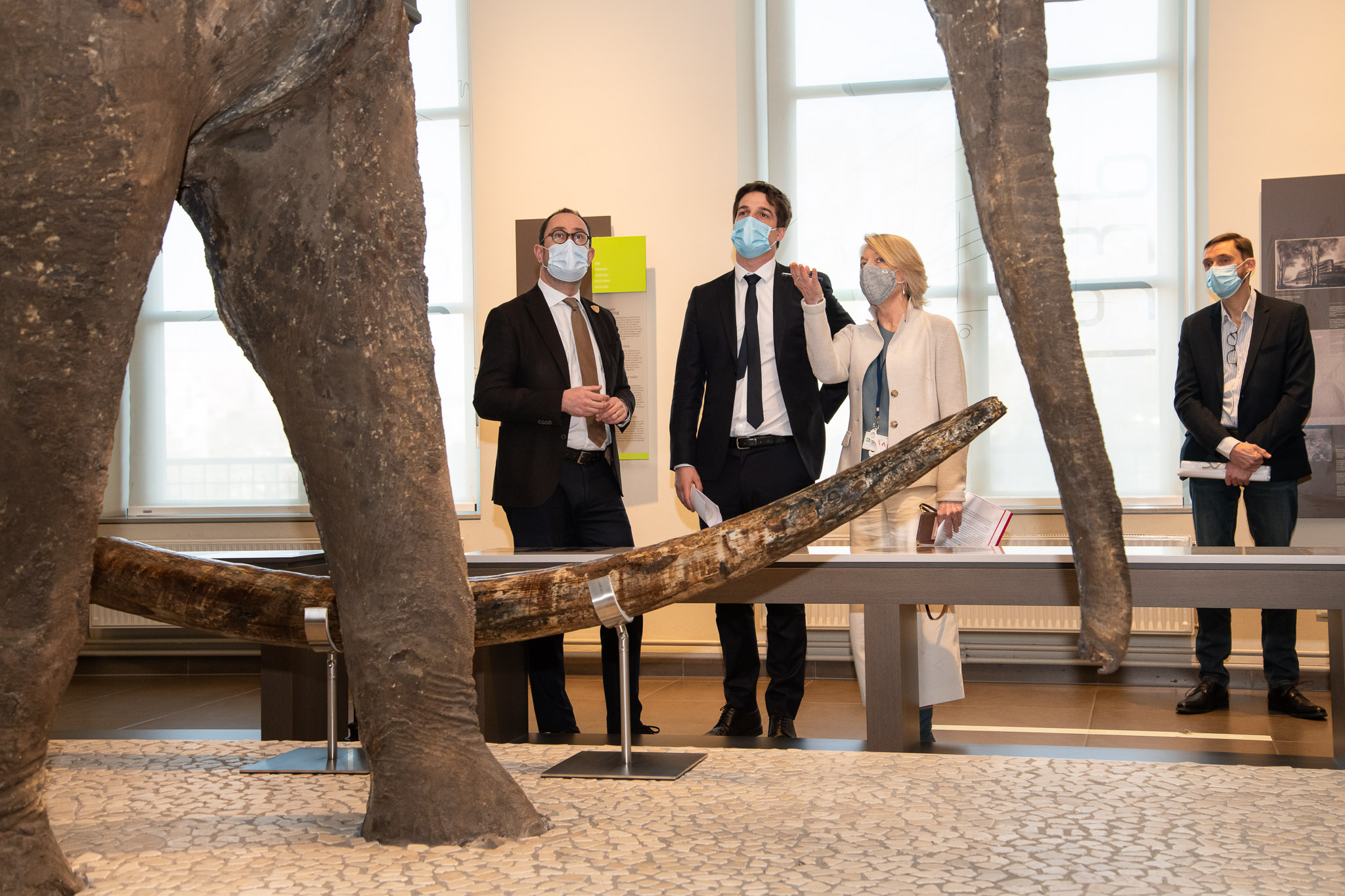 Minister Van Quickenborne, State Secretary Dermine and General Director Supply admire the tusk of the straight-tusked elephant in the Museum of Natural Sciences. (Image: RBINS/T. Hubin)
Minister Van Quickenborne, State Secretary Dermine and General Director Supply admire the tusk of the straight-tusked elephant in the Museum of Natural Sciences. (Image: RBINS/T. Hubin)
A new cooperation agreement
The discovery of the fossil tusk was also the occasion for drawing up a cooperation protocol within the framework of the law on the implementation of the UNESCO Convention of 2 November 2001 on the protection of underwater cultural heritage and the protection of valuable shipwrecks. In this agreement, the Governor of West Flanders, the Directorate General of Maritime Affairs (FPS Mobility and Transport), the Royal Belgian Institute of Natural Sciences, the Flemish Heritage Agency and the Flanders Marine Institute henceforth formalise the cooperation regarding the protection of the underwater cultural heritage, including the paleontological heritage, and the protection of valuable shipwrecks. The agreement ensures that future discoveries at sea will also be recorded, studied and, where necessary, made accessible to the public.
Minister Van Quickenborne: “Our North Sea reveals its treasures only sparsely. Yet the objects we find there are an important part of our heritage. Since last year, we have a new law that automatically protects heritage older than 100 years. More than 55 historic shipwrecks have already been recognised. Thanks to this law, we can now also include fossils in our heritage. The signing of the cooperation agreement is the final piece of this new law. In this way, the tusk of the straight-tusked elephant will not disappear into a private archive. Instead we can let everyone enjoy the richness of our North Sea heritage. At the same time, the scientists connected to the RBINS can research it and thus refine their knowledge of the prehistory in our regions.”
Secretary of State Dermine: “The fossilised tusk of a straight-tusked elephant, which was found off the coast of Zeebrugge, has, after a short wander, found its way to where it belongs. The RBINS is Belgium’s most important research centre for palaeontology and is renowned worldwide. The fossil, which is more than 115 000 years old, is being studied at the RBINS and is linked to other treasures in the huge collection of no less than 3 million fossils. This way, it forms a piece of the puzzle in the picture of life in our regions in ancient times, which is brought to life in the Museum of Natural Sciences. From 8 February onwards, the tusk can be admired by the 350,000 visitors who come to the Museum every year.”
General Director a.i. RBINS Patricia Supply: “Earth sciences, including palaeontology but also geology and archaeology, have always been an important field of research at the RBINS. It has allowed us to build up a reputable level of palaeontological knowledge and expertise. The acquisition and exhibition of the tusk of a forest elephant is closely linked to the objectives of the RBINS: in addition to scientific research and services, the management and development of heritage and scientific collections, and the dissemination of knowledge in the natural sciences are also core tasks of the institute. Today, the tusk is given a very prominent place in our museum, near the mammoth of Lier and the African elephant that once lived in the Brussels zoo.”

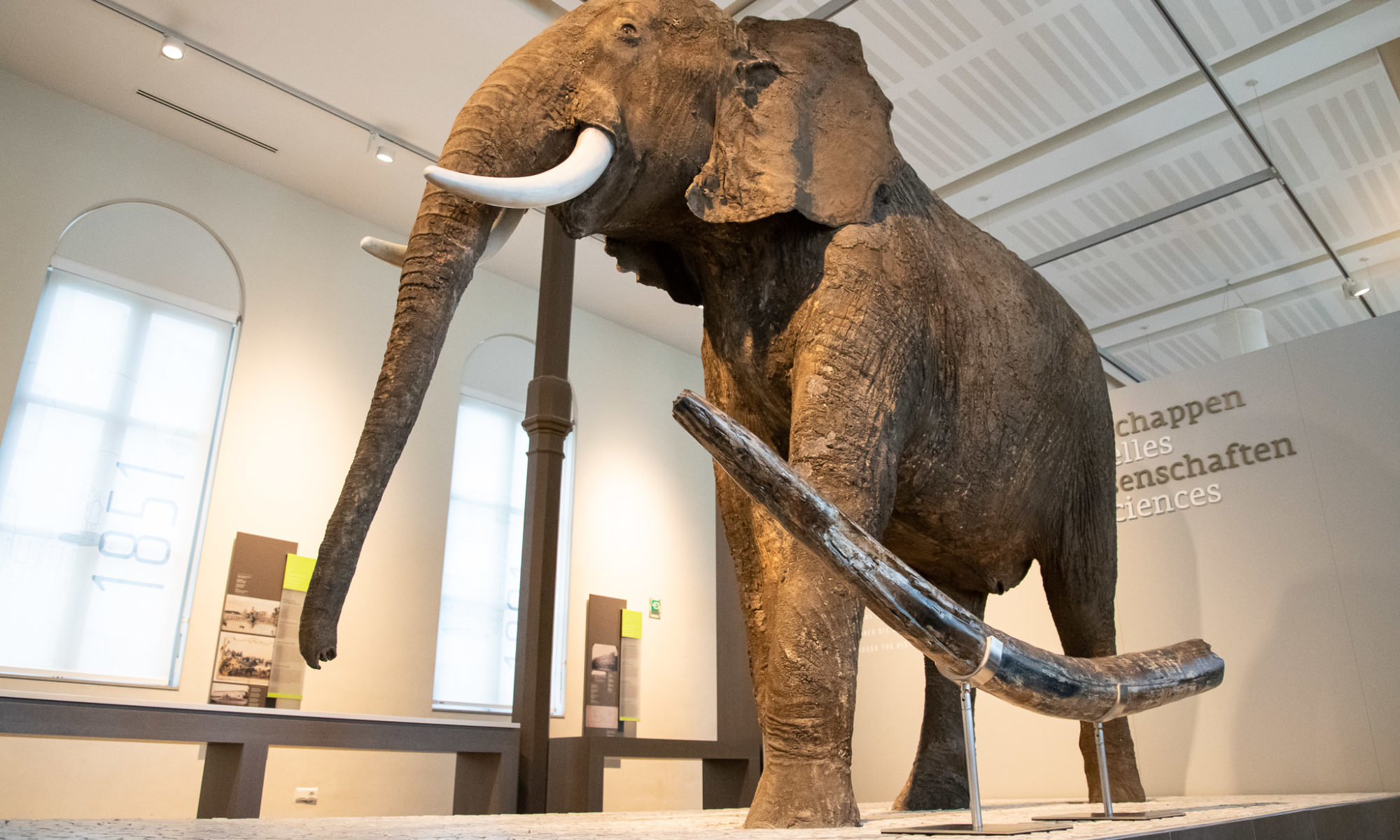
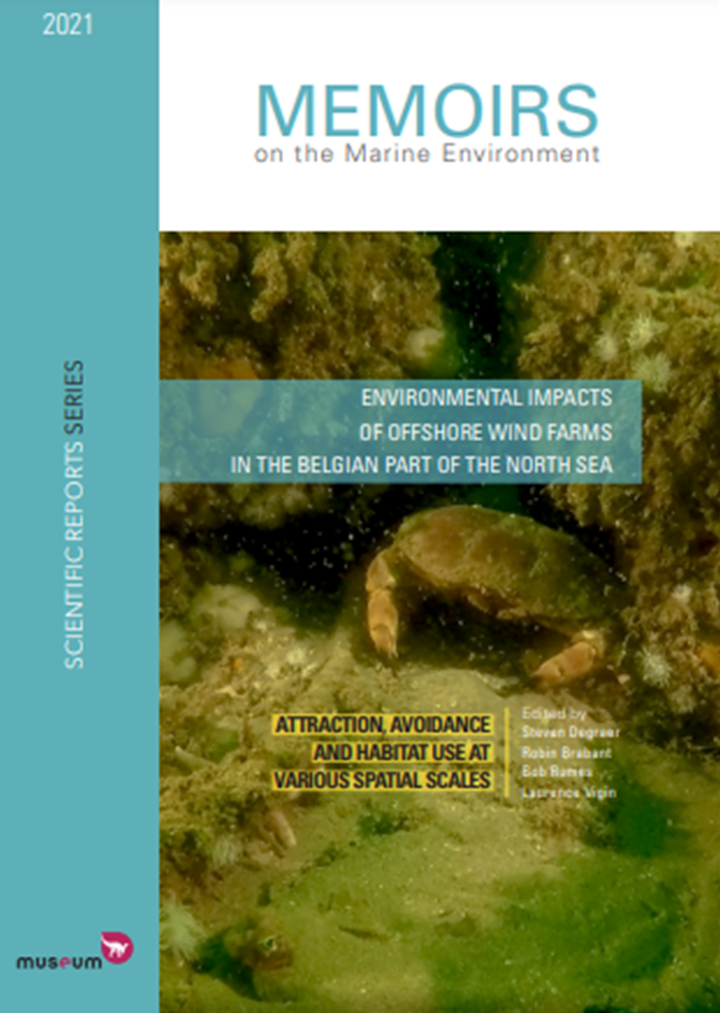
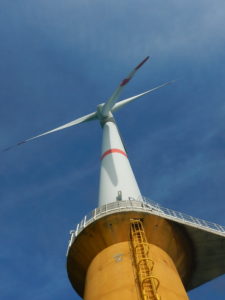 On 31 December 2019, Belgium submitted a National Energy and Climate Plan to the European Commission which envisions a target figure of 17.5% for the contribution of the production of electricity from renewable energy sources by 2030. Offshore wind farms in the Belgian part of the North Sea are expected to make an important contribution to achieve that goal. They are in fact already doing so, as currently 10 % of the total Belgian electricity demand, or 50% of the electricity demand of all Belgian households, is already produced by offshore wind farms. This is realised by a total of 399 turbines in eight wind farms, grouped in a zone of 238 km² along the border with the Netherlands. After 12 years of construction, this zone was fully operational from the end of 2020 and accounts for an installed capacity of 2.26 Gigawatts (GW) and an average production of 8 TWh. This puts Belgium in the 5th place worldwide in the production of this form of energy. A second area for renewable energy of 285 km² is foreseen by the new Belgian marine spatial plan (2020-2026), aiming for an installed capacity of 3.1 to 3.5 GW in this zone.
On 31 December 2019, Belgium submitted a National Energy and Climate Plan to the European Commission which envisions a target figure of 17.5% for the contribution of the production of electricity from renewable energy sources by 2030. Offshore wind farms in the Belgian part of the North Sea are expected to make an important contribution to achieve that goal. They are in fact already doing so, as currently 10 % of the total Belgian electricity demand, or 50% of the electricity demand of all Belgian households, is already produced by offshore wind farms. This is realised by a total of 399 turbines in eight wind farms, grouped in a zone of 238 km² along the border with the Netherlands. After 12 years of construction, this zone was fully operational from the end of 2020 and accounts for an installed capacity of 2.26 Gigawatts (GW) and an average production of 8 TWh. This puts Belgium in the 5th place worldwide in the production of this form of energy. A second area for renewable energy of 285 km² is foreseen by the new Belgian marine spatial plan (2020-2026), aiming for an installed capacity of 3.1 to 3.5 GW in this zone.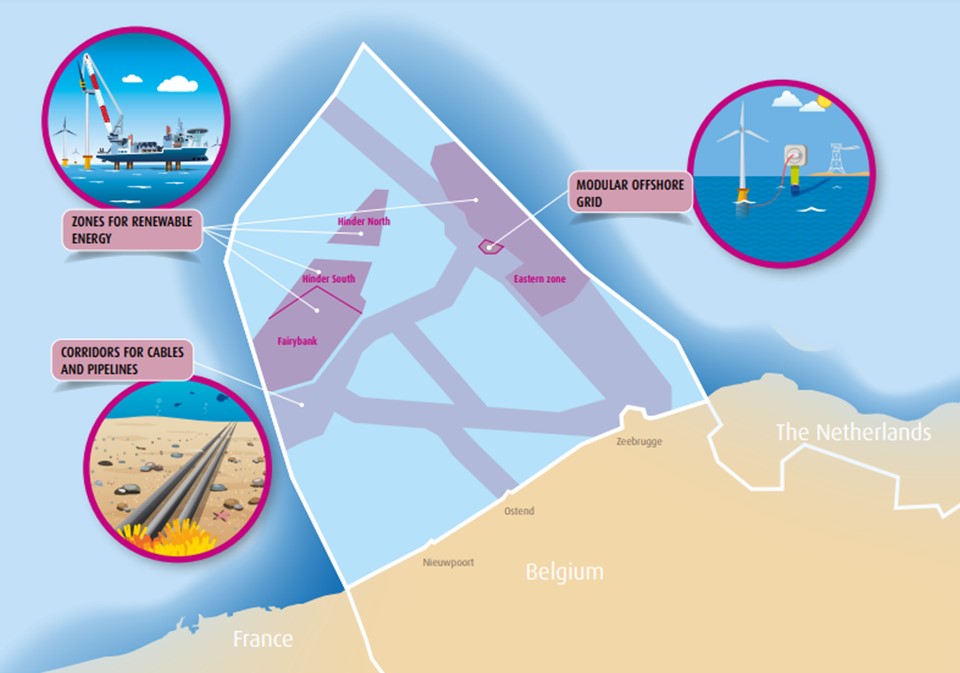
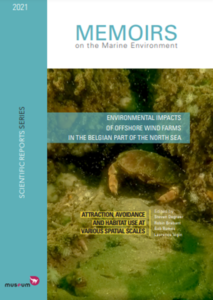 In their
In their 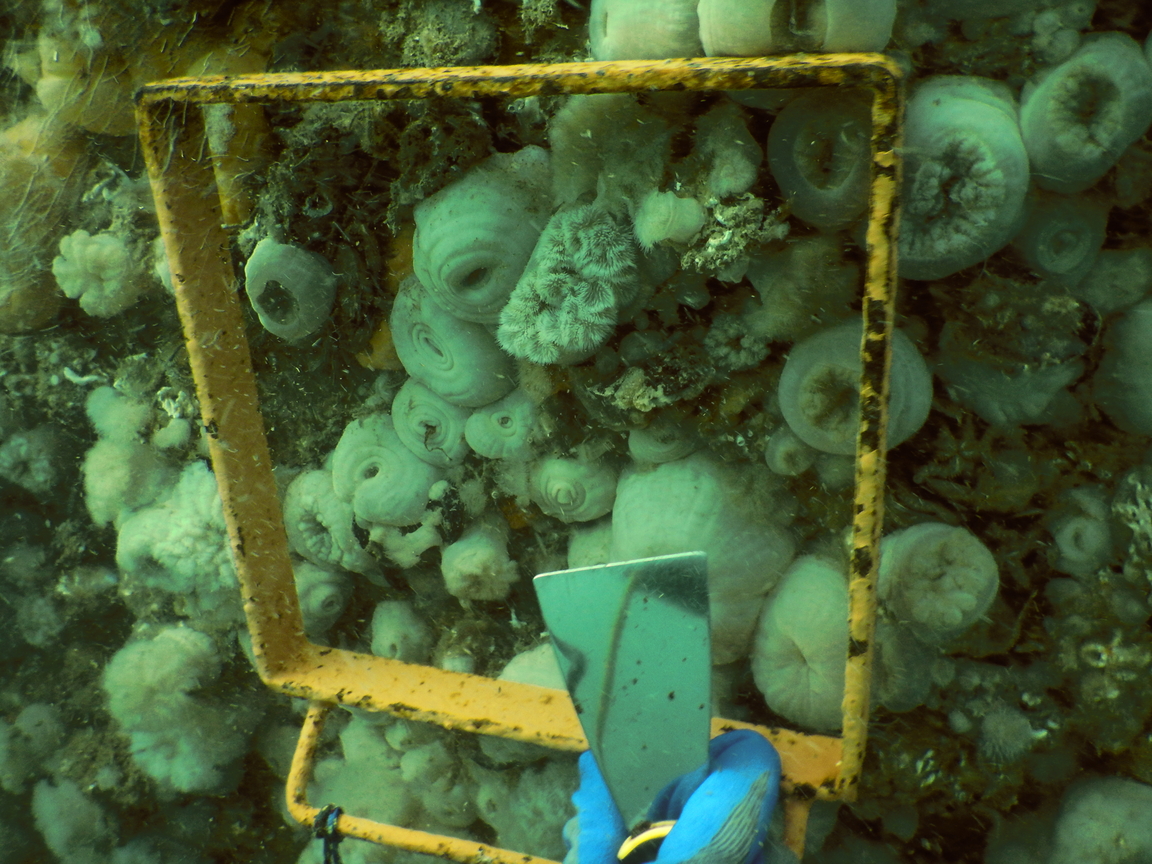
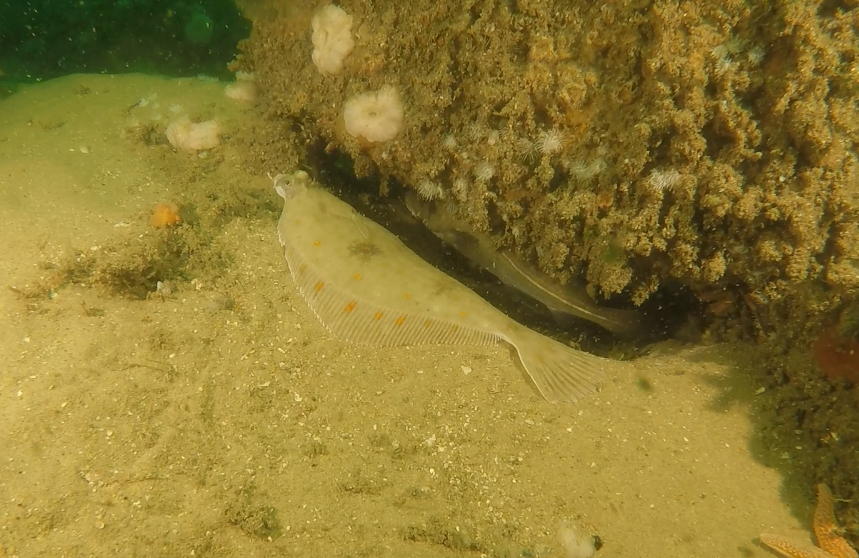
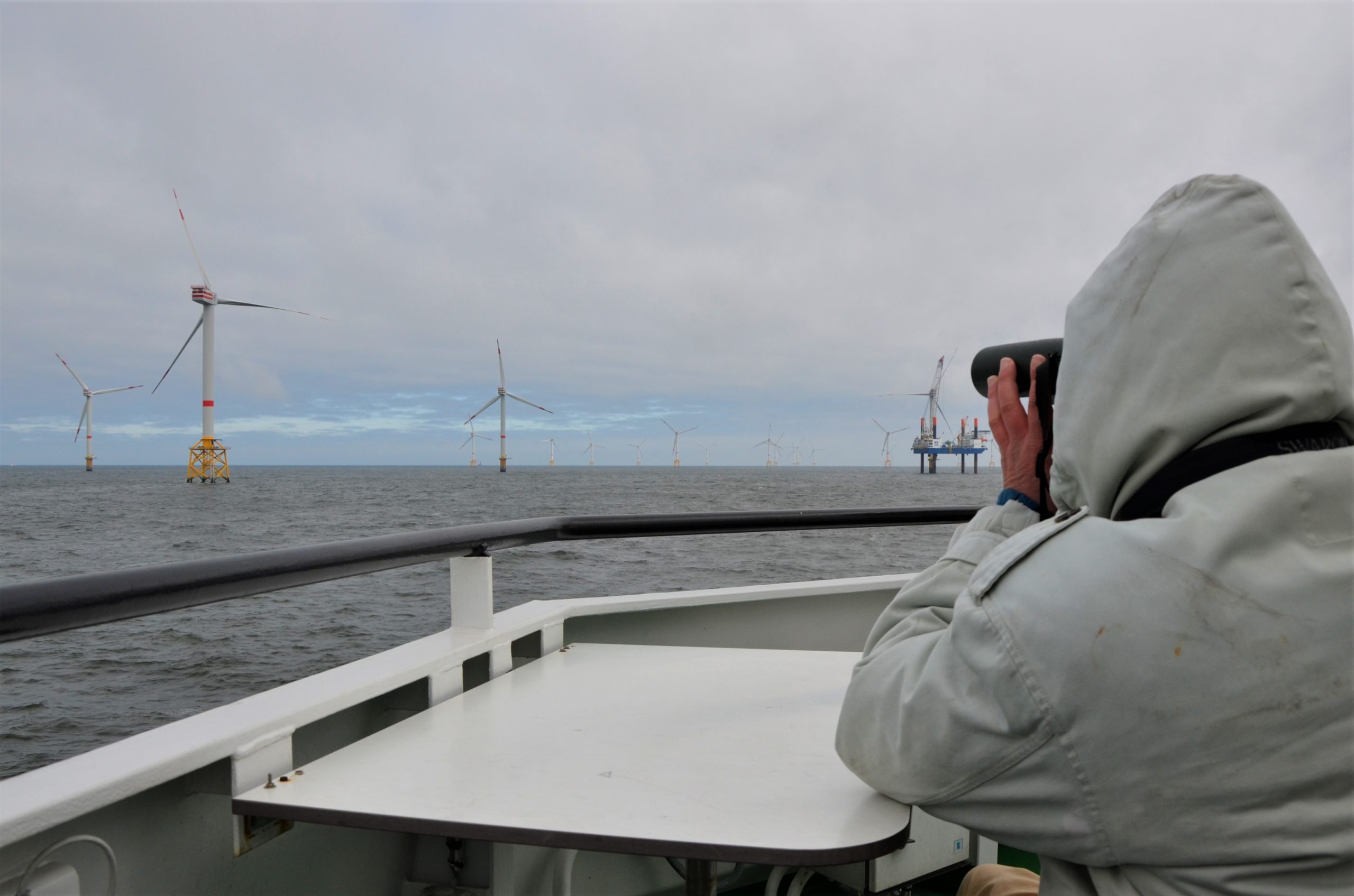
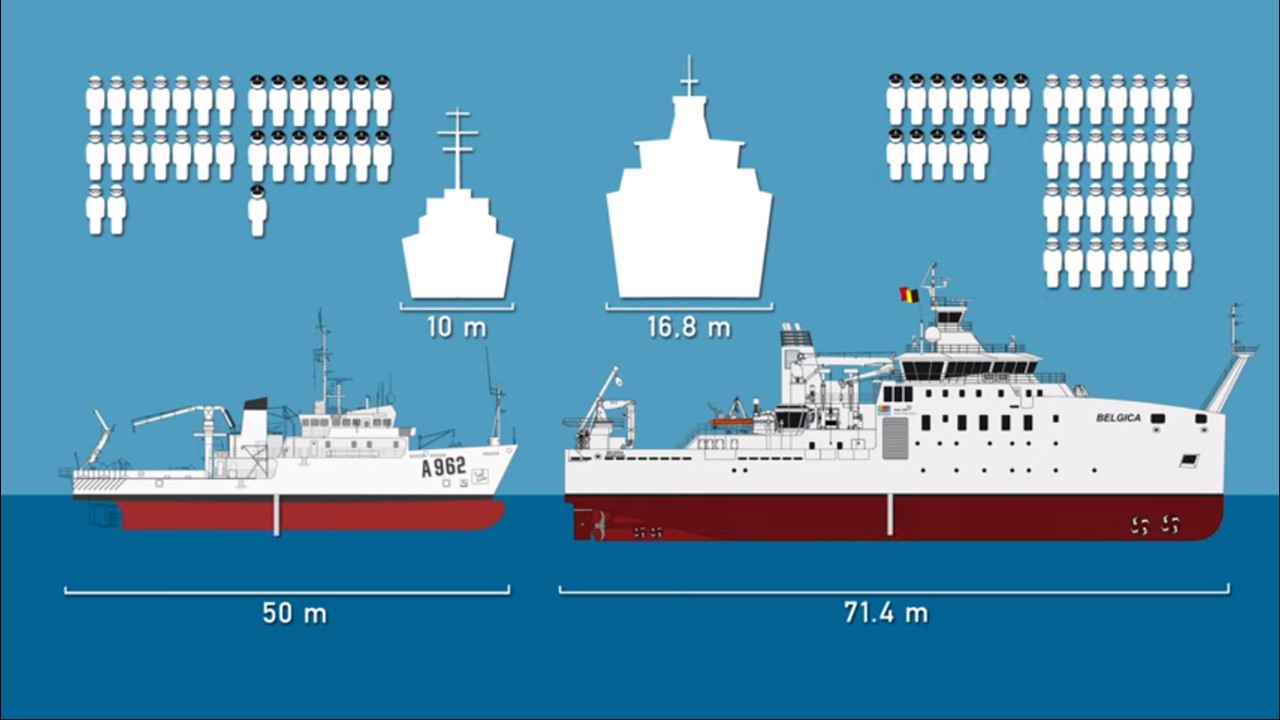
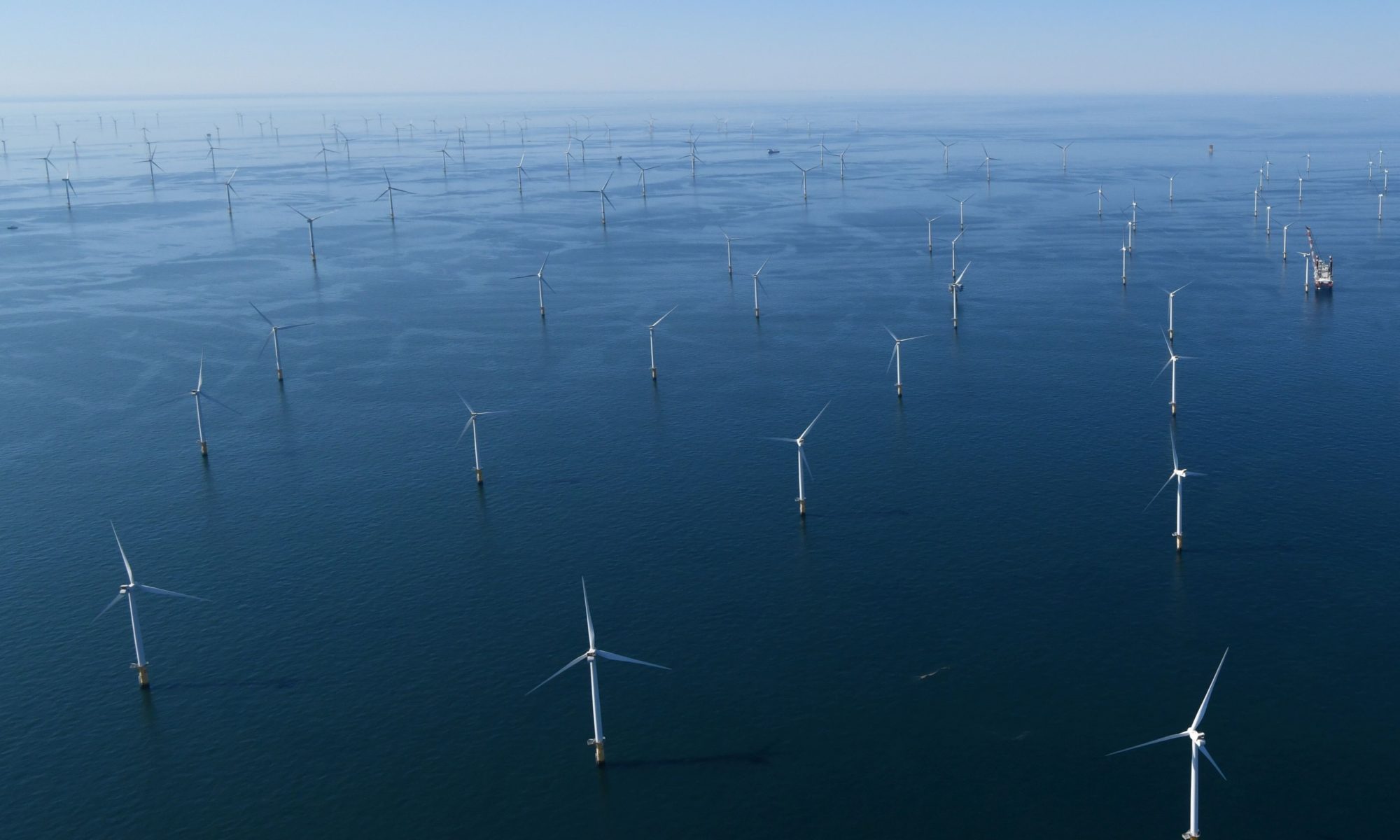
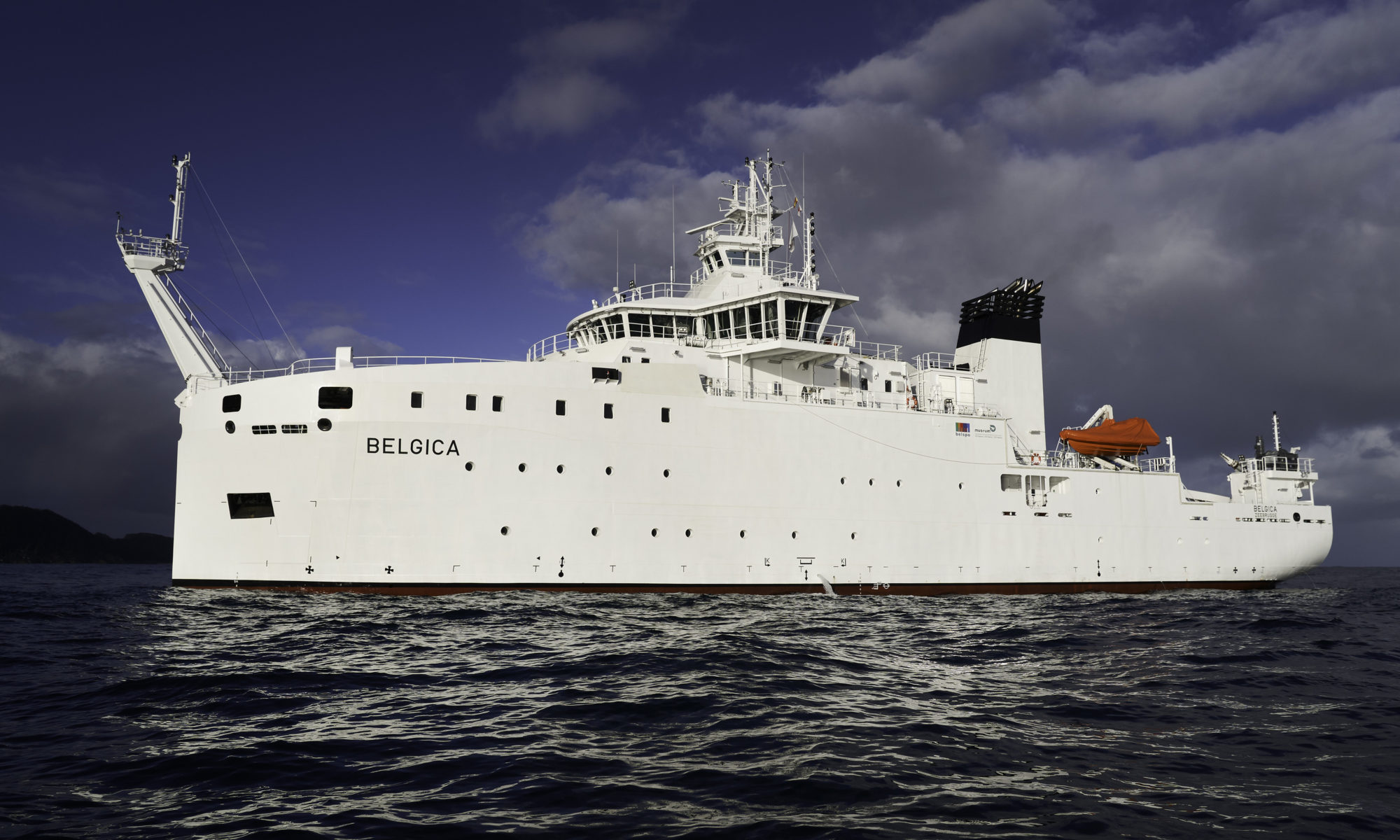
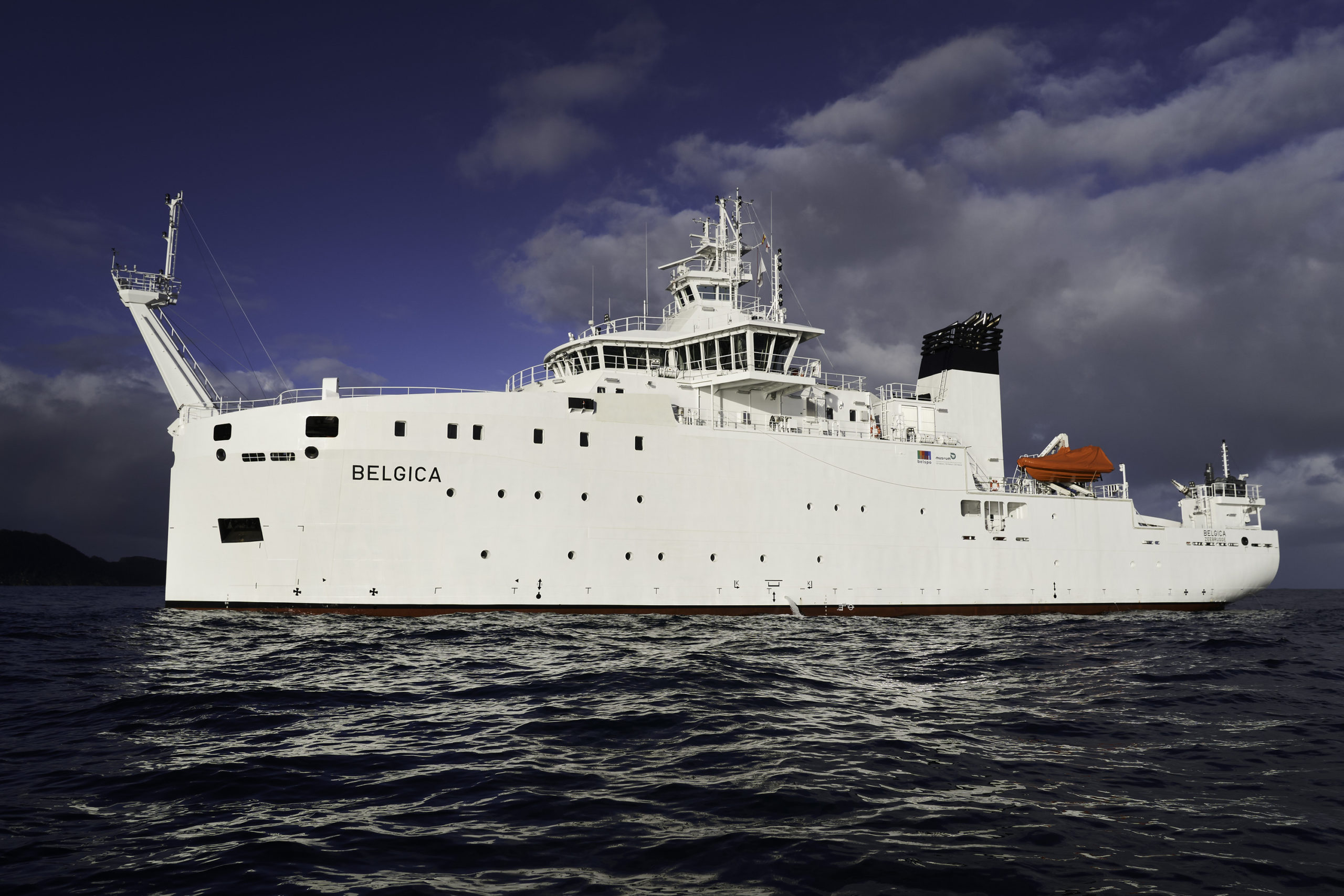
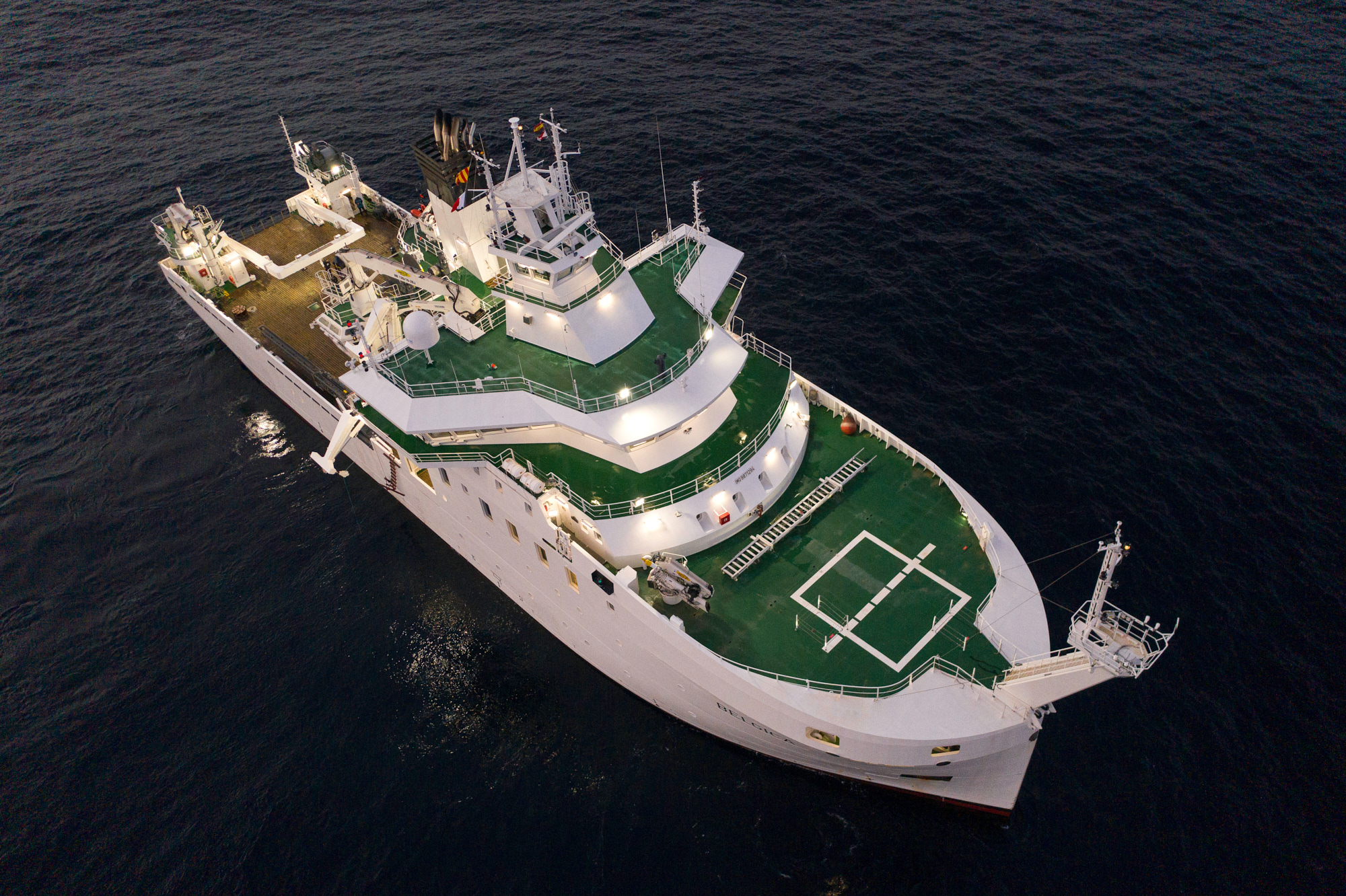
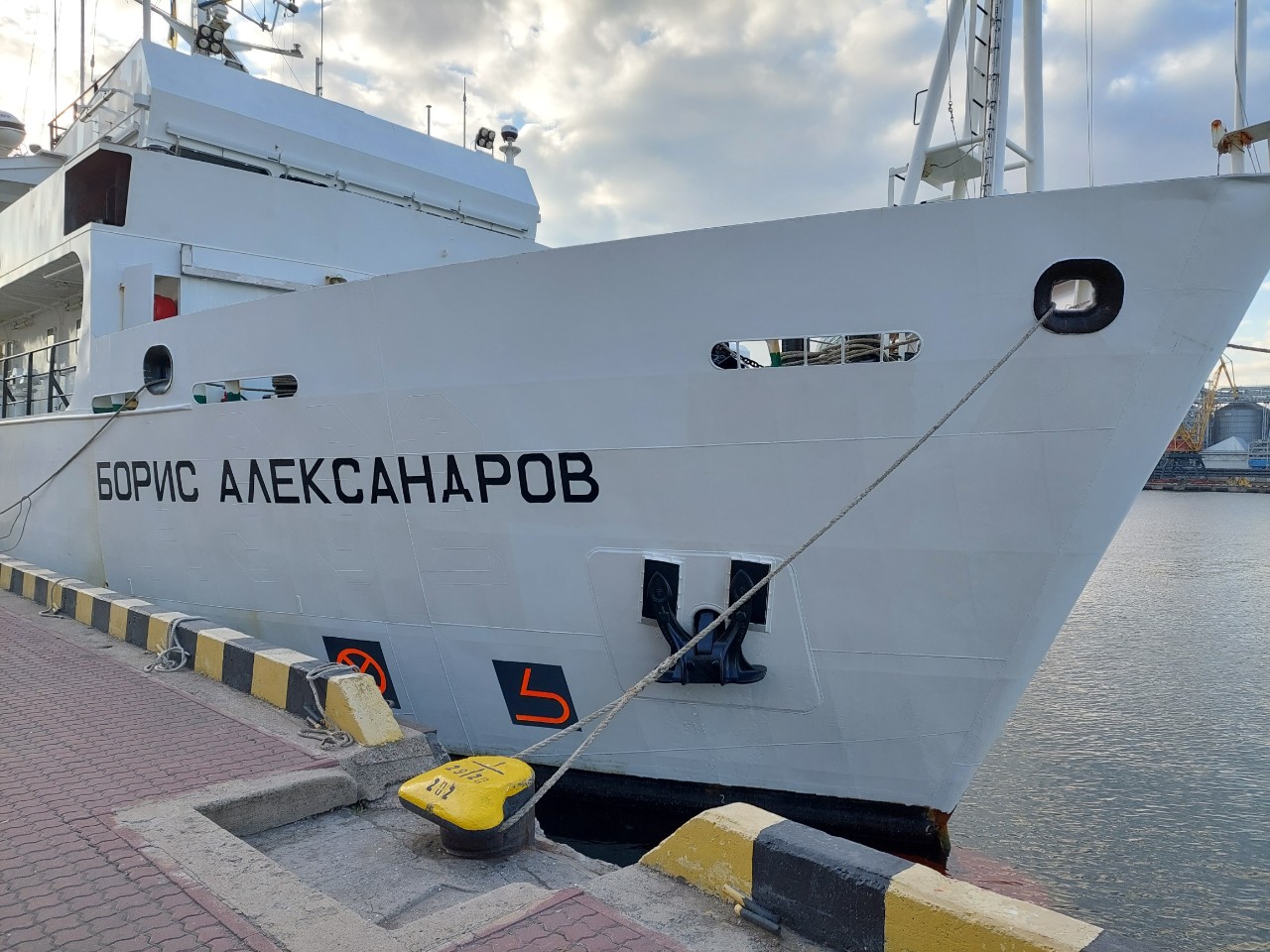
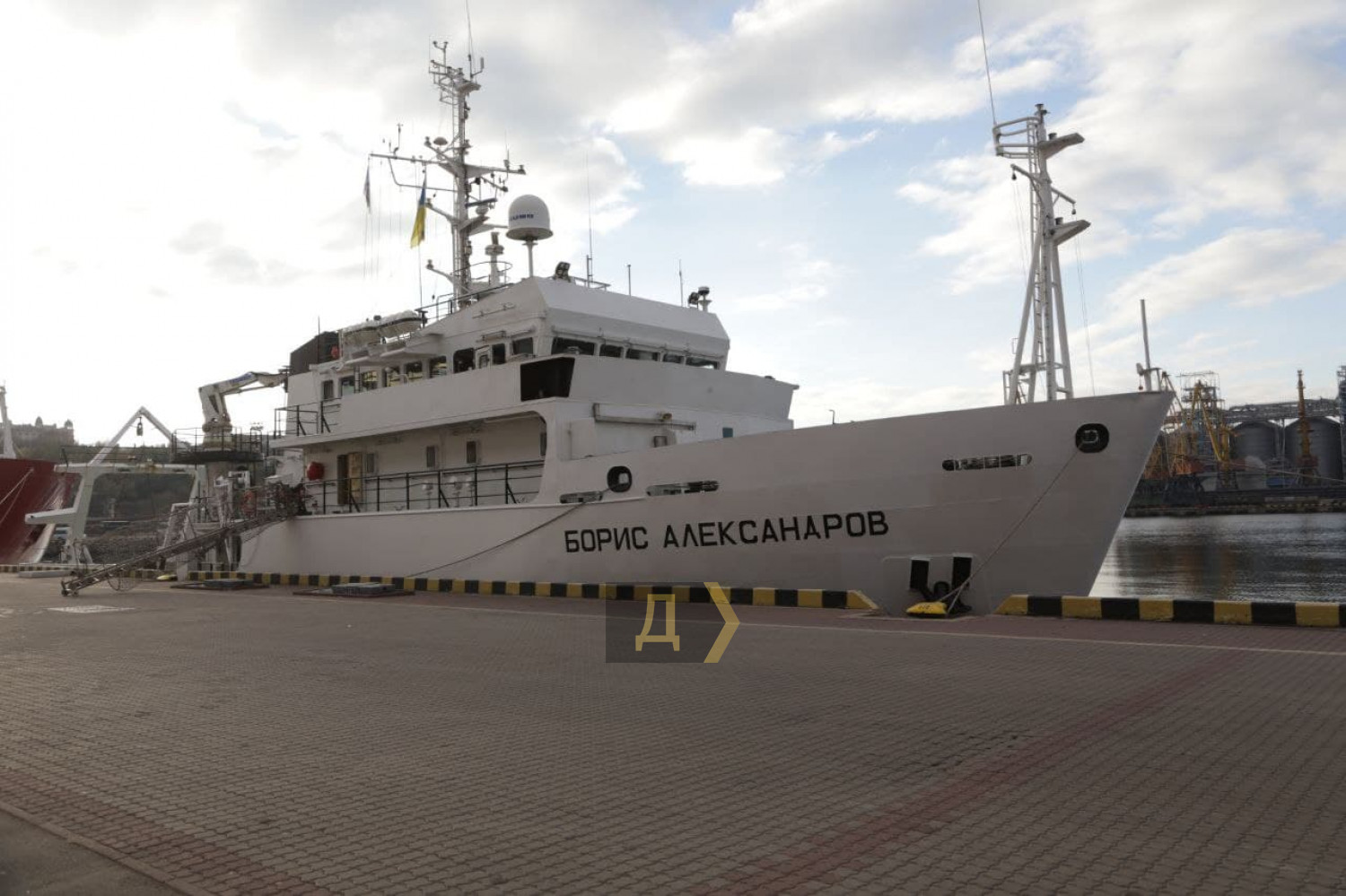
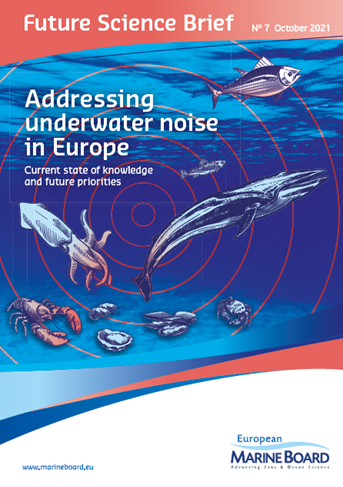
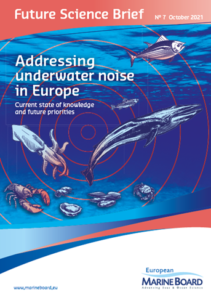
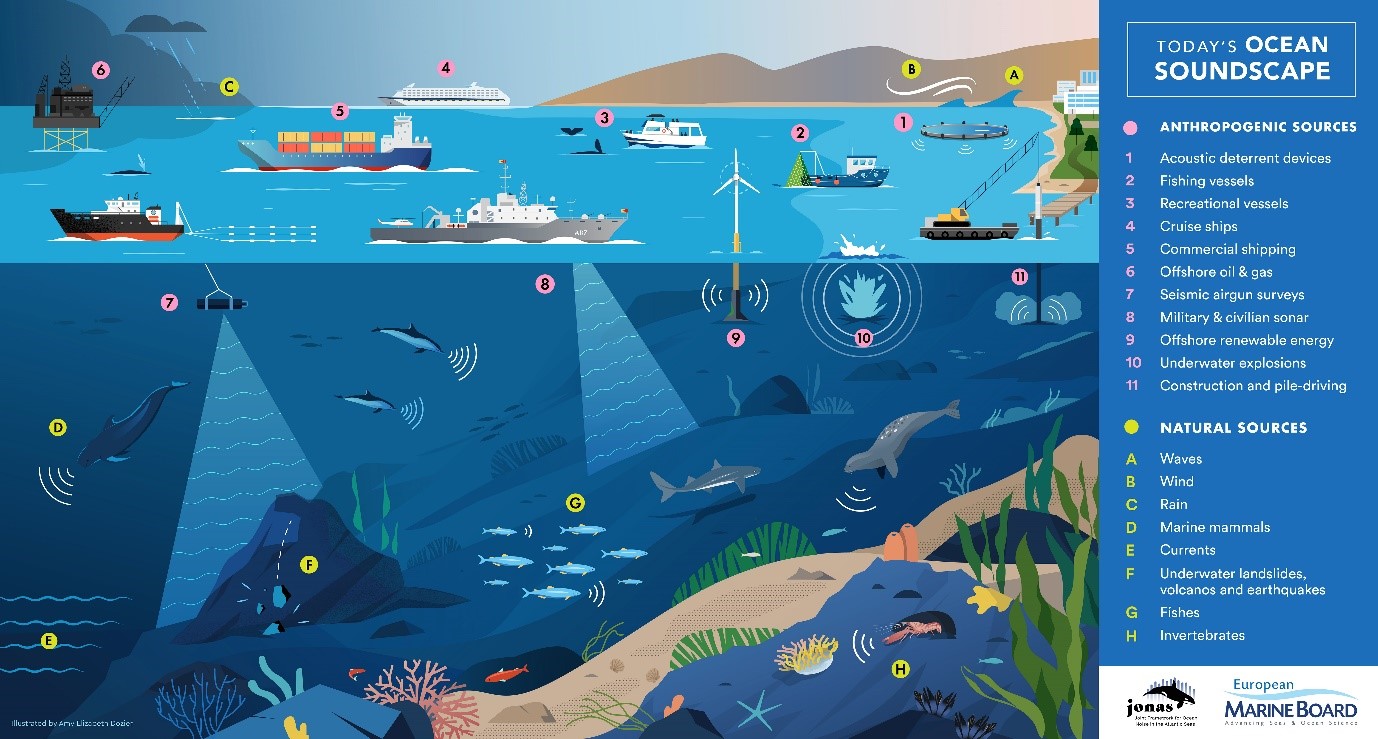


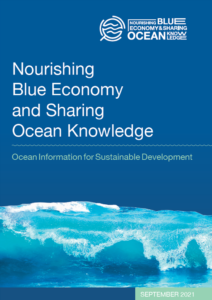 To provide input to the future establishment of such a framework, ten innovative EU projects to build user-focused, interdisciplinary, responsive and sustained ocean information systems and increase the sustainability of the Blue Economy, joined forces in a strong cluster to better address key global marine challenges. Under the lead of the EuroSea project, the group translated its common concerns to recommendations and listed these in the joint policy brief ‘Nourishing Blue Economy and Sharing Ocean Knowledge. Ocean Information for Sustainable Management.’.
To provide input to the future establishment of such a framework, ten innovative EU projects to build user-focused, interdisciplinary, responsive and sustained ocean information systems and increase the sustainability of the Blue Economy, joined forces in a strong cluster to better address key global marine challenges. Under the lead of the EuroSea project, the group translated its common concerns to recommendations and listed these in the joint policy brief ‘Nourishing Blue Economy and Sharing Ocean Knowledge. Ocean Information for Sustainable Management.’.